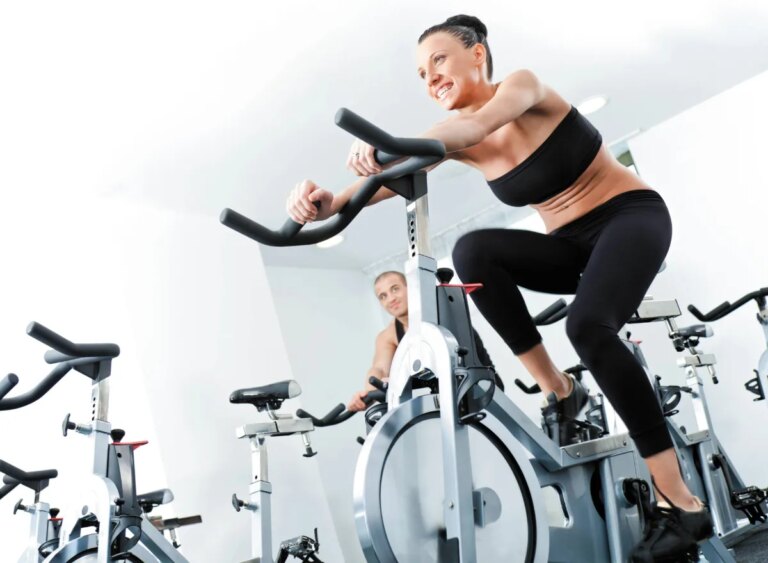[ad_1]
If you’re over 40 and looking to boost your fitness, you’re in the right place. Conditioning exercises are essential for maintaining strength, flexibility, and overall health as you age. But which conditioning exercises are the best? Are specific exercises better in your 40s, 50s, 60s, and beyond? To answer these questions, we spoke with Kyrie Furr, CPT, a certified personal trainer and performance coach with Barbend, who shares her top 10 conditioning exercises to do after 40. These movements will help you stay active, vibrant, and injury-free well into your later years.
As you age, engaging in exercises that improve cardiovascular health, balance, and muscle tone becomes increasingly important. Studies show that adults who engage in consistent aerobic and resistance training can reduce their chance of suffering from falls and fractures, and their chronic disease risk, all while improving their overall quality of life as they age. Incorporating the following conditioning exercises into your routine can help you combat the natural effects of aging, such as sarcopenia (natural loss of muscle mass) and reduced flexibility.
Regardless of your fitness level, you can customize the following movements to suit your goals. Keep reading for Furr’s 10 best conditioning exercises to help you thrive after 40 and for many years to come. Then, don’t miss The #1 Daily Balance Workout To Stay Mobile as You Age.
Brisk Walking
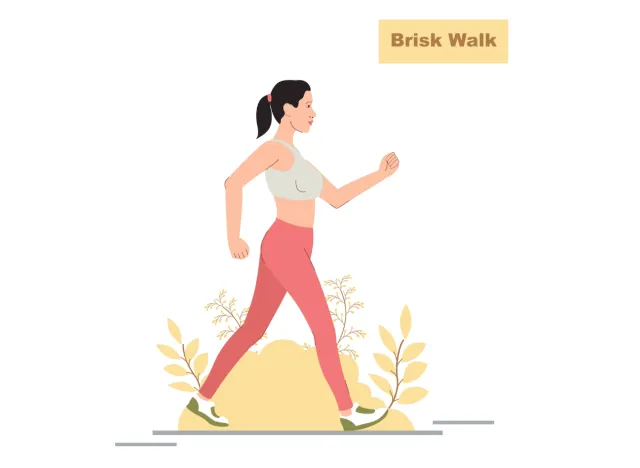
Brisk walking is an excellent low-impact cardiovascular exercise for those over 40. According to a 2021 review, this activity helps improve heart health, strengthens bones, and aids in weight management.
“Brisk walking is a simple yet effective cardiovascular exercise,” states Furr. “Walking at a pace that elevates your heart rate but still allows you to hold a conversation can benefit people of all ages, especially those over 40. Aim for at least 30 minutes most days of the week.”
Cycling
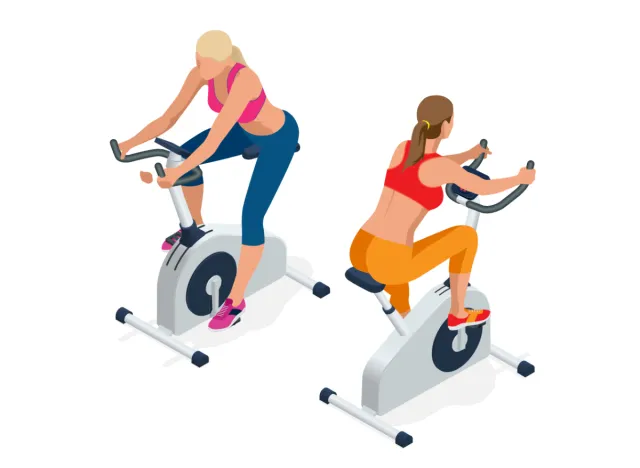
Cycling is another low-impact exercise that provides a fantastic cardiovascular workout while being gentle on the joints. Whether you prefer outdoor biking or a stationary bike, research suggests cycling can help improve endurance, leg strength, and overall fitness.
Furr tells us, “Cycling can be done outdoors or on a stationary bike and is a low-impact form of exercise that’s excellent for cardiovascular health and lower-body strength. Perform this activity three to five times weekly for 30 to 60 minutes per session.”
Swimming
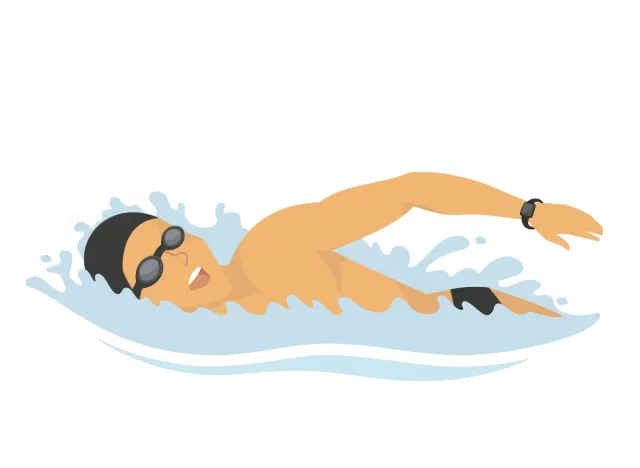
Swimming is an excellent full-body workout that’s easy on the joints and suitable for all fitness levels. A 2015 study found that swimming regularly can boost cardiovascular health, tone muscles, and enhance flexibility.
“Swimming laps or participating in water aerobics classes is an effective form of cardiovascular exercise. One can benefit from swimming two to three times per week for 30 to 45 minutes per session,” says Furr.
Resistance Band Training
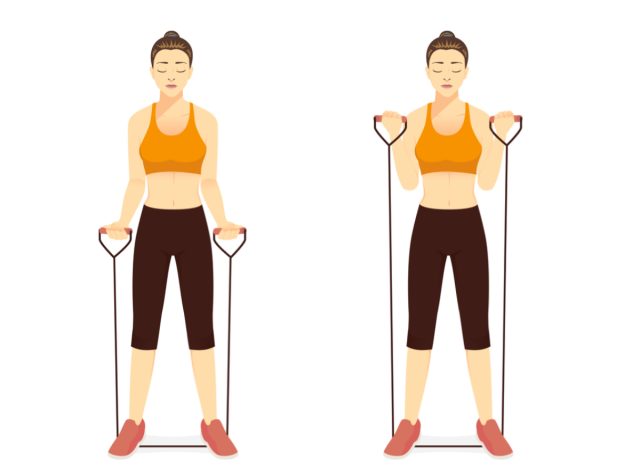
Resistance bands are ideal for those over 40 since they’re easy on the joints and allow you to perform a wide range of exercises that target multiple muscle groups. Plus, they’re a convenient and effective way to build strength and improve muscle tone.
“Resistance band training provides both strength and cardiovascular benefits,” says Furr. “It can provide an effective way to build strength, improve flexibility, and enhance overall conditioning. Do resistance band training two to three times per week, performing two to three sets of 10 to 15 reps per exercise.”
Bodyweight Circuit Training
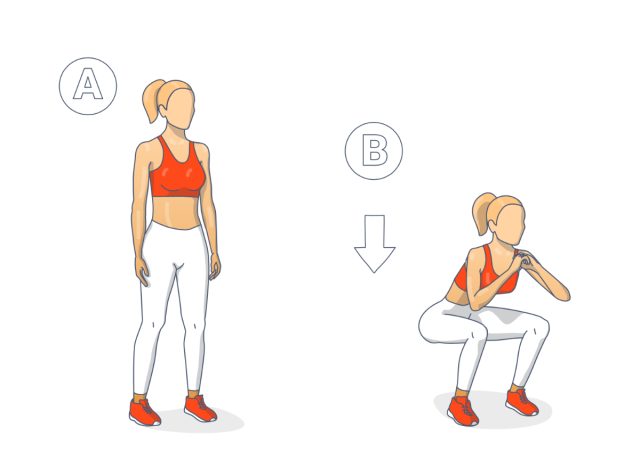
Bodyweight circuit training combines strength and cardio exercises into one stellar workout. Furthermore, research points out that this type of exercise helps improve overall fitness, build muscle strength, and boost metabolism without taking too much time away from your day.
“Bodyweight circuit training is a series of exercises performed in succession with minimal rest in between, such as squats, pushups, lunges, and planks,” Furr explains. “You can mix and match the kind of movements performed and for how many sets. These circuits can be done as intervals or for certain repetitions. Aim for two or three weekly sessions, completing three to four circuits with 10 to 15 reps per exercise.”
Yoga
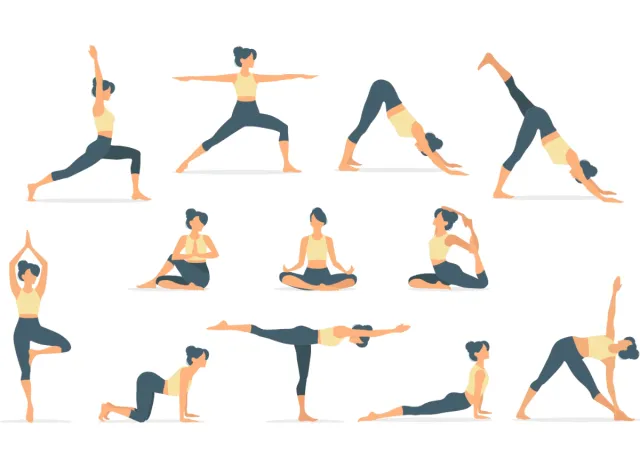
Besides yoga’s well-known health benefits like better flexibility, increased strength, and stress reduction, it can also improve your balance and posture—two essential components of healthy aging.
“Yoga can be a great exercise for someone at any age,” says Furr. “It can help improve flexibility, balance, and core strength while promoting relaxation and stress reduction. Do two or three weekly yoga sessions, attending classes or following online videos for 30 to 60 minutes per session.”
Pilates
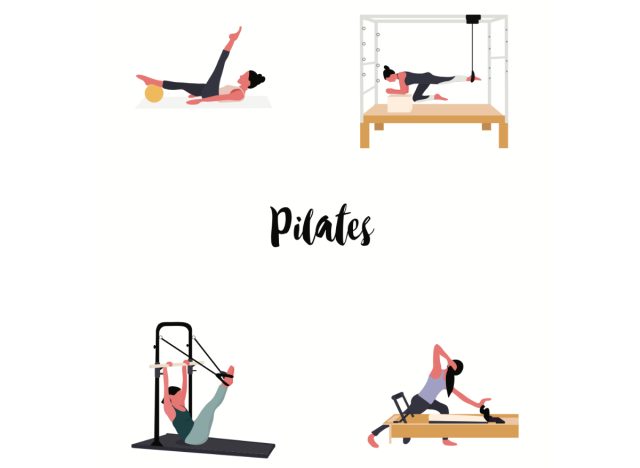
Pilates is another excellent choice for improving core strength, stability, and flexibility, benefiting those 40 and beyond.
Furr explains, “Pilates focuses mainly on core strength, flexibility, and body conditioning through controlled movements and breathwork. Perform two or three times per week, participating in classes or guided sessions for 45 to 60 minutes each.”
Rowing
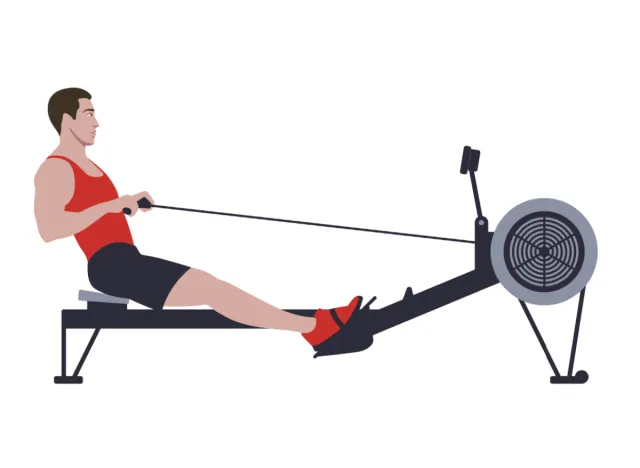
Rowing is another low-impact, full-body workout that’s particularly effective for strengthening the upper body, core, and legs while improving joint health and cardiovascular well-being.
“Rowing provides a full-body cardiovascular workout while also targeting the back, arms, and core muscles,” says Furr. “Rowing is generally considered a lower-impact exercise than many other forms of cardiovascular activity, particularly running or high-impact aerobics. Aim for two or three 20 to 30-minute sessions per week.”
Tai Chi
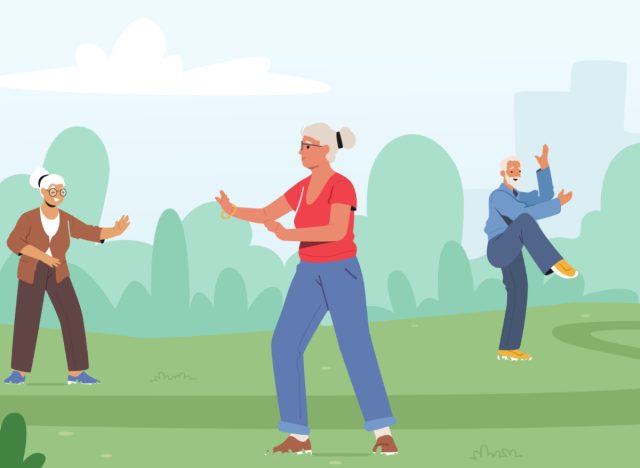
Tai Chi is a traditional Chinese practice and a gentle exercise focusing on slow, flowing movements and deep breathing. According to a 2023 review, Tai Chi can improve balance, flexibility, and relaxation while enhancing mental clarity and reducing stress.
“Tai Chi is a gentle form of martial arts that emphasizes slow, flowing movements, balance, and relaxation. Do it two or three times per week, attending classes or practicing for 30 to 60 minutes per session,” says Furr.
High-Intensity Interval Training (HIIT)
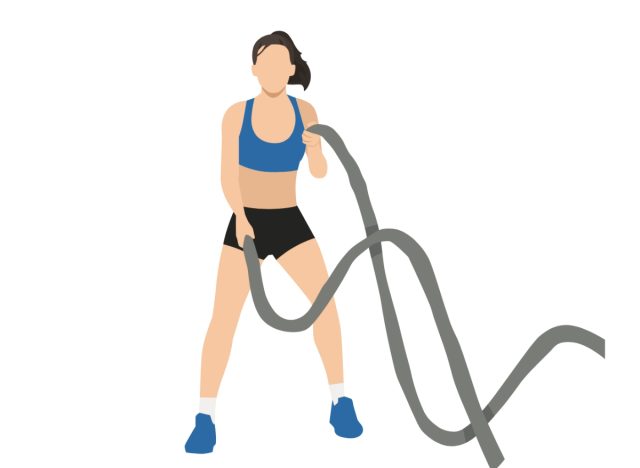
HIIT workouts involve alternating between short bursts of intense exercise and brief periods of rest or lower-intensity activity. This type of exercise is a killer way to boost cardiovascular fitness, torch calories, and speed up your metabolism.
“With HIIT, you can pick and choose what movements you want to perform; bodyweight or strength-based movements are all excellent choices. Perform two or three 20 to 30-minute HIIT sessions per week,” says Furr.
[ad_2]
This article was originally published by a www.eatthis.com . Read the Original article here. .


